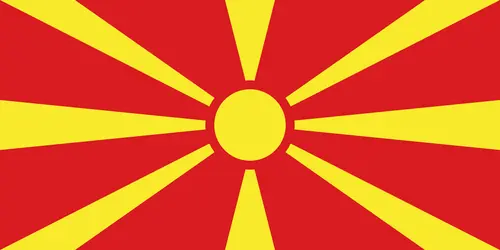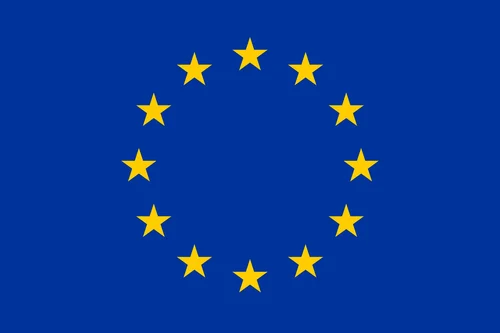About CITES
CITES (the Convention on International Trade in Endangered Species of Wild Fauna and Flora) is an
international agreement between governments, aiming to ensure that international trade in specimens of wild
animals and plants does not threaten the survival of the species. Because the trade in wild animals and
plants crosses borders between countries, the effort to regulate it requires international cooperation to
safeguard certain species from illegal international trade.
According to CITES, international trade in the species listed in appendices to the Convention is permitted
only to the extent in which the survival of these species is not endangered. The Convention regulates
international trade in wild fauna and flora species, their import, export and re-export which are carried
out on the basis of permits and certificates issued only after the prescribed conditions have been met.
Convention
The text of the Convention was finally agreed at a meeting of representatives of 80 countries in Washington,
D.C., United States of America, on 3 March 1973, and on 1 July 1975 CITES entered in force.
Republic of North Macedonia ratified the CITES in 1999 and the Ministry of Environment and
Physical Planning (MoEPP) was appointed as the competent management authority for implementation of the
Convention, as well as issuing permits and certificates for regulation of international trade with
endangered species of wild fauna and flora.
How CITES works
CITES works by subjecting international trade in specimens of selected species to certain controls. All
import, export, re-export and introduction from the sea of species covered by the Convention has to be
authorized through a licensing system. Each Party to the Convention must designate one or more Management
Authorities in charge of administering that licensing system and one or more Scientific Authorities to
advise them on the effects of trade on the status of the species.
The authority competent for issuing documents necessary for introduction, export or transit of endangered
wild fauna and flora species in Republic of North Macedonia is the Ministry of Environment and Physical
Planning.
Customs authorities are responsible for checking whether consignments of specimens of endangered fauna and
flora species are accompanied by appropriate permits or certificates upon their introduction into the EU,
export or re-export from the EU or transit through the EU.
CITES endangered species (official link)
The species covered by CITES are listed in three Appendices, according to the degree of protection they need.
(link)
Appendix I
Appendix I includes species threatened with extinction. Trade in specimens of these species is permitted only
in exceptional circumstances.
Appendix II
Appendix II includes species not necessarily threatened with extinction, but in which trade must be
controlled in order to avoid utilization incompatible with their survival.
Appendix III
This Appendix contains species that are protected in at least one country, which has asked other CITES
Parties for assistance in controlling the trade. Changes to Appendix III follow a distinct procedure from
changes to Appendices I and II, as each Party’s is entitled to make unilateral amendments to it.
Appendix-I specimens
An import permit issued by the Management Authority of the State of import is required. This may be issued
only if the specimen is not to be used for primarily commercial purposes and if the import will be for
purposes that are not detrimental to the survival of the species. In the case of a live animal or plant, the
Scientific Authority must be satisfied that the proposed recipient is suitably equipped to house and care
for it. An export permit or re-export certificate issued by the Management Authority of the State of export
or re-export is also required.
Appendix-II specimens
An export permit or re-export certificate issued by the Management Authority of the State of export or
re-export is required.
Appendix-III specimens
In the case of trade from a State that included the species in Appendix III, an export permit issued by the
Management Authority of that State is required. This may be issued only if the specimen was legally obtained
and, in the case of a live animal or plant, if it will be prepared and shipped to minimize any risk of
injury, damage to health or cruel treatment.
CITES species in North Macedonia
About 100 species are listed in CITES Annexes I, II, III. Among them are 75 birds, 7 mammals, 5 reptiles, 3
plants.
- Falco naumanni
- Pelecanus crispus
- Bubo bubo
- Lynx lynx
- Lutra lutra
- Testudo graeca
- Parnassius apollo
- Cyclamen hederifolium
Legislation/ regulations (EU and MK sub menus)
EU legislation
Regulations:
- Council Regulation (EC) No 338/97 on the protection of species of wild fauna and flora by regulating
trade therein
- Commission Regulation (EC) No 865/2006 laying down detailed rules concerning the implementation of
Council Regulation (EC) No 338/97 on the protection of species of wild fauna and flora by regulating
trade therein
- Commission Implementing Regulation (EU) No 792/2012 laying down rules for the design of permits,
certificates and other documents provided for in Council Regulation (EC) No 338/97 on the protection of
species of wild fauna and flora by regulating trade therein and amending Commission Regulation (EC) No
865/2006
- Commission Implementing Regulation (EU) No 2019/1587 prohibiting the introduction into the Union of
specimens of certain species of wild fauna and flora in accordance with Council Regulation (EC) No
338/97 on the protection of species of wild fauna and flora by regulating trade therein
National legislation
Конвенција за меѓународна трговија за загрозени диви животински и растителни видови (Вашингтон)
Закон за ратификација (“Службен весник на РМ” бр. 82/99)
Ратификувани конвенции | МЖСПП (moepp.gov.mk)
Projects
About the project
Improving Capacities for Natura 2000 and CITES
Project’s purpose is to strengthen and improve administrative capacities of the Ministry of Environment and
Physical Planning/Administration of Environment for implementation of the EU nature protection acquis,
through development of legislation, provision of training and implementation of EU Nature Protection
legislation as a Birds and Habitat Directives and Council Regulation (EC) No 338/97 on the protection of
species of wild fauna and flora.
Component CITES expected results:
- Preparation of Primary legislation aligned with the Council Regulation (EC) No 338/97
- Capacity building program for implementing of CITES Regulative
Project duration: June 2022 – November 2024

